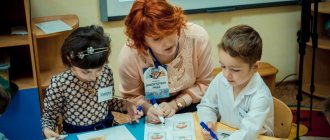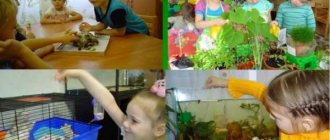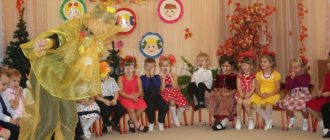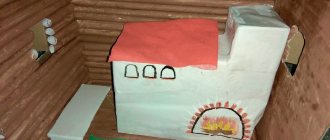Signs of coherent speech. How to develop them
It is convenient to evaluate coherent speech according to its characteristics:
- Logic. Thoughts must be presented sequentially.
- Correctness and diversity of vocabulary.
- Content. You need to know the subject or phenomenon well.
- Clarity. People around you must understand the speaker.
- The accuracy of the statement. During a monologue, words are selected especially carefully, reality is depicted as truthfully as possible.
Since systematic learning is not available to young children, it is carried out in a playful way.
The development of coherent speech through play is achieved by many methods. These are various types of theaters, mnemonic techniques, excursions, participation in children's matinees, various competitions, and role-playing games.
Mnemonics
This technique is used by both adults and children in cases where it is necessary to remember a large amount of information. Its essence lies in translating information into images, so to speak, a brief summary in pictures. Mnemonics helps to perceive and reproduce information in the future.
Since preschoolers and primary schoolchildren have visual-figurative memory, it is easier for them to remember information based on a drawn plot or a diagram of pictures and signs.
Mnemonics capabilities
She helps:
- remember the sequence of events;
- accustom to a daily routine;
- create associations with letters and words when learning to read;
- develop attention when examining diagrams and tables;
- develop imaginative thinking by establishing a connection between word and image.
For these purposes the following are used:
- Pictures,
- mnemonic square (a clear picture depicting a word, phrase or sentence),
- mnemonic track (four consecutive images),
- tables that you can draw with your children.
Mnemonic tables are the most complex types of visualization. They depict the plot of a fairy tale or poem in the most understandable figurative pictures. Using mnemonic tables, you can come up with your own plot, or you can tell familiar works.
Role-playing game
These are games during which children talk to each other and with toys, imitate the voices of animals, the hum of a car, or an airplane.
They communicate by creating dialogues. The plots of such games can be taken from life or from works of fiction: “Shop”, “Family”, “Kindergarten”, “School”, “Bus”, “Space Theater”, “Zoo”, “Cat House”, “Post Office” " There is no need to adhere to a strictly defined plot. An adult can help prepare attributes for the game, play a role himself, and help children develop the plot, directing it in the right direction.
Finger Theater
This method, in addition to the development of coherent speech, stimulates the development of memory, attention, hand motor skills, and coordination of movements. By interacting with peers, children quickly memorize the text of the role, learn to transform, and acquire means of expression. If parents participate in the performance, the enjoyment of this type of activity increases many times over.
Using game methods, all signs of coherent speech are developed.
Subsequence
- I'll start a fairy tale, and you continue
In the hands of an adult is a doll depicting a fairy tale character. He begins to talk, saying 1-2 sentences, then hands the toy to the child. The child continues the story, speaking 1-2 sentences, and passes the toy back. The storytellers pass the doll to each other throughout the story.
- Finish the story
Children are asked to finish the story started by an adult. For example: “One day we were playing near the house, and we wanted to go for a walk in the forest. We picked mushrooms and berries, sang funny songs and didn’t notice how we had gone too far. We were very scared and... What happened next?” You can come up with a lot of such stories, introducing fairy-tale characters or real people into them.
- We use mnemonics exercises
Here are some of the most common exercises:
- Get a group together. Give your child pictures on 1-3 topics (clothes, sports, fruits) and invite them to group them and explain why he thinks so.
- Draw your impressions. Invite your child in the evening to draw good and bad impressions of the day and talk about them. An adult should add several new concepts and words every day.
- Learn poetry. Memorize poems using a mnemonic table, where the lines are represented by pictures.
- Memory grid. Show several pictures, arranging them in a grid, name, describe, turn over, suggest naming. Check by turning the picture over.
- Photo memory. Show and remove the picture, give instead a similar one, but differing in 1-2 details. Let him name these differences.
- Day Night. Lay out the pictures and invite the baby to close his eyes, since night has come. Remove one picture, invite them to open their eyes and name the hidden copy.
Logic
Logic development games:
- The pictures are mixed up. Looking at the bright colorful pictures, the child must find the artist’s “mistakes” and name them. Another option is to arrange pictures depicting some kind of story or fairy-tale plot in the desired order.
- Collect a proverb. This is a game for children who can read. You need to connect the beginning of the proverb and its end on the card, choosing it from several options.
- Find the mistake. The child is shown a plot picture with absurdities drawn on it. For example, in a picture depicting a winter landscape and children playing in the snow, there is an image of a scoop and a bucket of sand.
Emotional coloring
- Funny songs
Speech and music have a lot in common. These are rhythmicity, various intonations, division into phrases, dynamism and varied tempo. By frequently repeating the same words, children remember them and use them correctly in sentences. In addition, kids sing the text in whole phrases, which enriches coherent speech. These can be lullabies, “get up” songs sung in the morning, logorhythmics, when singing is accompanied by movements.
- Participation in matinees
Children participating in public performances learn not to be embarrassed by the public and to coordinate their actions. When performing, kids try to earn applause, so they convey the text of poems and skits as accurately as possible.
- Competition of poems and riddles
Riddles are miniature descriptive stories. They are figurative and expressive, foster a culture of communication, and make speech expressive. Children love to solve riddles, but often cannot come up with them on their own. To stimulate coherent speech, you can hold a riddle competition or a poetry reading competition.
By participating in such a competition, children concentrate their attention as much as possible. They easily remember the poems and riddles used in the competition, since everything is done in a playful way.
- We use role-playing games
Role-playing game creates a favorable emotional background and high spirits. Therefore, everything that goes through the game is learned easily and quickly. Children take on the roles of adults, reproducing relationships between people and their activities. To do this, you need to communicate between participants, comment on your actions and the actions of your peers.
For everything to go well, the child has to coherently express his thoughts and use the correct grammatical forms in speech. Otherwise, no one will understand what the “seller” (firefighter, teacher, builder, educator) needs. Children assign roles and build the plot of the game. If an adult plays with them, they listen to how he constructs his statement and try to imitate.
Availability of words of all parts of speech, including function ones:
- Find out the word from the description. Children are asked to guess the word based on its characteristics, named by an adult. For example: “cowardly, gray...” (hare), “white, cow, fragrant...” (milk).
- How can I say it differently? The adult names the word and invites the children to choose words that are similar in meaning. For example: “beautiful - amazing, beautiful.” For this didactic game, all parts of speech are used.
Card sets
- Which, which, which. The adult shows a card that shows a diagram, for example, with a picture of an object made of wood and the tree itself. Offers to name what object. “What window? Wooden."
- Big small. The cards depict the same object in different scales. The child is asked to show where the object is big and where the object is small.
- Short words. Children are shown toys and asked to first name those that are designated by short words (lion, ball), and then by long ones (turtle, butterfly, car).
- Who knows how to do what. This educational game can be varied by taking cards on different topics. For example, you can show your child cards on the topic “Insects” and ask: “What can a dragonfly (beetle, butterfly, caterpillar, spider) do?”
Using complex common sentences
- Excursions
The significance of this method is that during real or virtual excursions the child learns the meaning of new words. He learns to use them appropriately in accordance with the situation in which he finds himself. For example, during an excursion to the autumn forest, an adult pays attention to the fact that the stream is clear, clear, clear, murmuring, and cold. Autumn is golden, early, crimson, warm, gloomy or sunny.
It is the adult who introduces the child to the external world around him and draws attention to its features. Researchers of children's speech believe that the object or phenomenon that the child cannot name does not seem to exist for him.
- Finger Theater
For finger theater performances, you can use both widespread and well-known Russian folk nursery rhymes and fairy tales (“Zayushkina’s hut”, “Rukavichka”, “Kolobok”, “Turnip”), as well as poems by Korney Chukovsky, A. S. Pushkin, Samuil Marshak, Agnia Barto and other children's authors. Finger puppets cheer up kids and give them joy. Their use does not require special conditions or equipment. For performances, they use homemade or store-bought miniature dolls that are placed on the fingers.
- Plane theater
Theatrical fairy tales are understandable to children even at an early age; their dramatization is similar to magic that you can do with your own hands. The first performance is shown by mom or dad, then the children join in the dramatization. Their speech becomes more literate, figurative expressions and sayings from the text of fairy tales appear in it.
- Mitten dolls
With the help of such dolls, you can act out familiar fairy tales with the participation of one or more children.
If there is more than one “actor,” an adult distributes the roles. Theatrical fairy tales can be changed, a different development of events, an ending can be invented for them, and new characters can be introduced into old fairy tales. Playing with a doll distracts children from their own speech errors. Parents make comments about speech errors not to the child, but to the doll, which gives the kids self-confidence. The most difficult type of such dramatization is inventing and acting out a fairy tale invented by children on their own.
Formation of speech in preschool children in play activities
We know what a big role adults play in children's language development. The teacher’s participation in children’s free play cannot be limited to organizing the environment and selecting play materials. She should show interest in the process of play itself, give children new words and expressions associated with new situations; talking to them about the essence of their games, influence the enrichment of their language. Guiding the observations of children when familiarizing them with the environment, the teacher must help ensure that the life observed by children stimulates them to reproduce in play, and therefore in language, their positive, best sides. Thus, pedagogical measures in organizing free play for children come down to the following:
1. Organize a place for play that is appropriate for the age and number of children playing on it. 2. Consider the selection of toys, materials, manuals and constantly monitor their updating in accordance with the needs of the developing game process and the general development of children. 3. Guiding the observations of children, promote the display in the game of the positive aspects of social and work life. 4. Encourage grouping of children in the game (by age, development, speech skills) to promote the growth and development of the language of the weaker and lagging behind. We highly recommend including older children in the game. 5. Show interest in children’s games through conversations based on their content, guide the game and, in the process of such guidance, exercise the children’s language.
A child playing talks continuously; he speaks even if he plays alone, manipulates objects that do not stimulate conversation.
But there are toys whose value as stimuli for children’s speech is exceptional. These are toys depicting animate objects: animals, people. The horse that a child plays with is a living creature for him. He speaks to her as the owner who serves him or works with his living horse speaks to him.
The educational role of the doll is especially significant. Anyone who has observed properly organized doll games understands this.
There is not a single game that provides as many reasons for the manifestation of children's speech as playing with dolls. A doll is a person, a member of a team of little people living their own lives and reflecting this life - a play on words. But this life requires pedagogical guidance.
Games with dolls, provided they are properly organized and pedagogically guided, offer ample opportunities for orienting children in various forms and settings of social and work life. By playing with dolls and serving them, children acquire a number of skills related to everyday everyday life, work life, which are closest and most understandable to them, skills to which we lead them in the first place, which they consolidate in play and each of which requires the cooperation of language . We pay insufficient attention to the free, but under pedagogical control, games of children that take shape. In the children's day, a certain time should be allocated for such games, corresponding to their significance. Teachers must master the methods of organizing such games, primarily in the interests of children’s language development. The so-called outdoor games require special attention. These games are determined by certain rules, which are difficult for small 3-4 year old children to follow.






